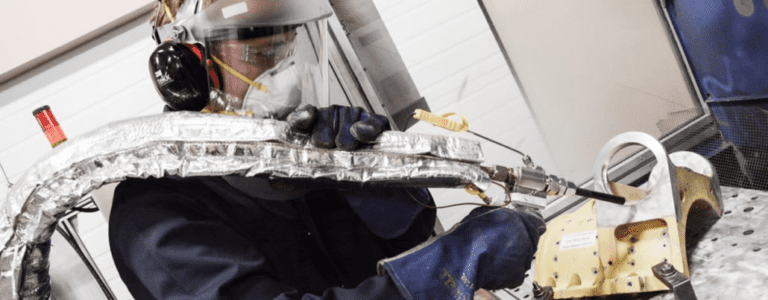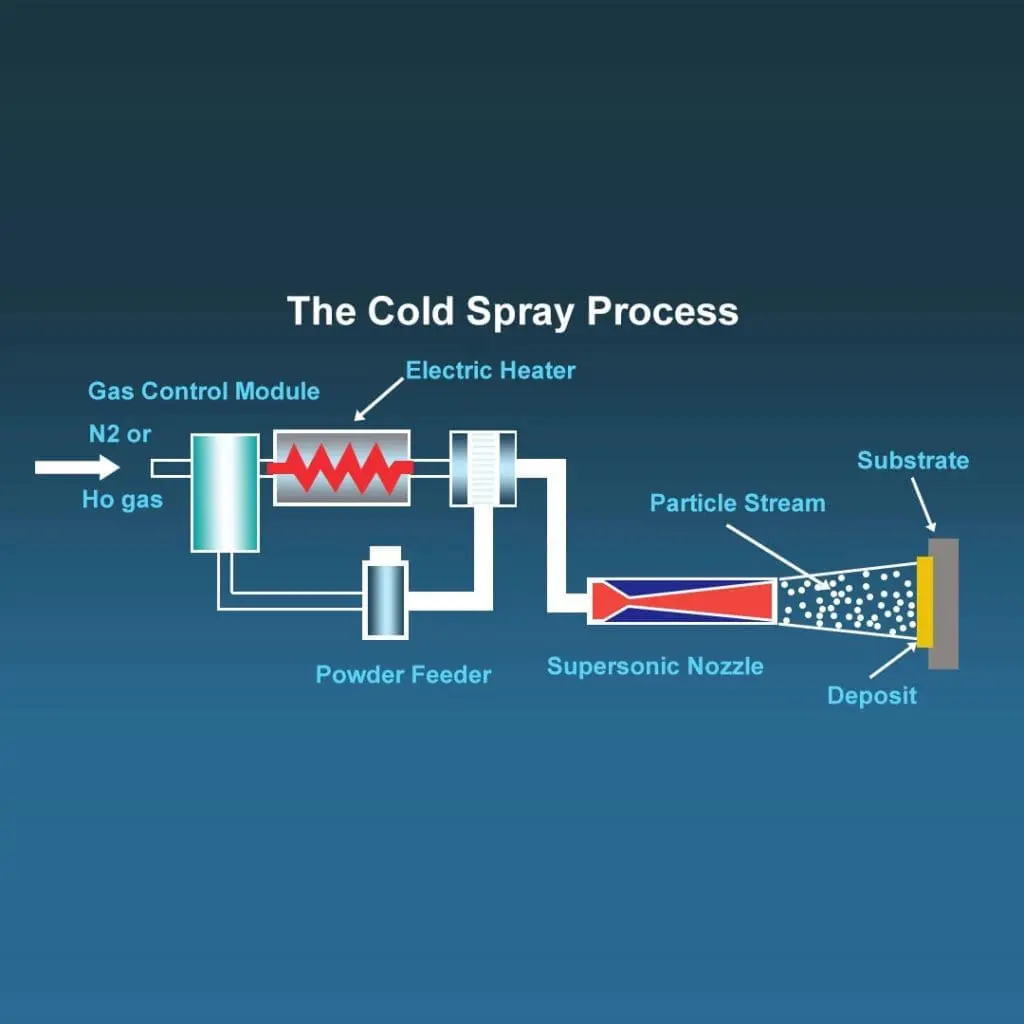For many years, large volumes of metal have been used throughout the world in constructing structures, such as ships, automobiles, buildings, etc. Hence, repairing these structures will always be a substantial and necessary part of the industry. Often, welding has been the best way to repair these metal structures and components using techniques such as, gas tungsten arc (GTAW/TIG), gas metal arc (GMAW/ MIG), shielded metal are (SMAW) and flux cored arc (FCAW).
There have been numerous studies done over the years documenting the hazards of the welding process. On an operator level, there is a significant risk of overexposure to toxic fumes and gasses, which can result in respiratory illness, cancer, impaired speech, etc. On an environmental level, there are welding processes, such as MIG, that can cause potential environmental impacts in categories of global warming, acidification, eutrophication, and photochemical ozone creation [1]. However, in recent years there has been a new solution for repairing metal structures and components: Cold Spray (CS). CS is an innovative, efficient, effective and environmentally friendly alternative to welding that is changing the way the industry repairs metal parts.
What Is Cold Spray?
Cold Spray, also known as supersonic particle deposition, is a high-energy solid-state coating and powder consolidation process. In layman’s terms, it is a process of heating and spraying micro-particles of metals (primarily) at an extremely high rate of speed onto a surface. It is an extremely efficient method of applying metals, metal alloys and metal blends on a wide variety of surfaces.
In the CS process, micro-sized metal particles are accelerated supersonically toward a substrate, where collision results in significant plastic deformation, mechanical interlocking, and metallurgical bonding of the particles to the substrate and/or previously deposited layers of particles. During the process, the metal particles never reach melting temperatures, but are fused through kinetic energy transfer and adiabatic shearing processes, therefore substrate heating is minimized, dimensional stability is maintained, and unwanted thermal effects (heat affected zone, thermal stresses, dilution layer formation, etc.) are avoided.
CS can be used in a wide range of applications including coatings and repairs in industries such as aerospace, maritime, automotive, military, energy and more.
How Is Cold Spray Green?
CS is being used in place of many different types of metal repairs and building processes, especially welding.
The welding process often requires a lot of preparation and protocols to limit the volume of fumes and gasses released into the environment. However, these protocols are not enough, and welding still poses serious physiological and environmental hazards.

The main hazard is the welding fumes which primarily consist of iron oxide, manganese, nickel and chromium VI oxides depending on the project. These fumes have been shown to affect the nervous system and cause occupational asthma. The fumes, when not properly prepared for, can be released into the environment and affect the health of everything they interact with including plants and humans.
In addition to the fumes released, welding also consistently releases gas, like nitrous gasses and carbon monoxide into the atmosphere. The resultant air pollution can lead to various adverse environmental impacts in the atmosphere and natural environment. The main concern surrounding these gasses are the effects to the ozone layer and climate change. Welding is used in so many industries that it is hard to determine the exact volume of gasses released into the atmosphere, but the adverse gas production is significant enough to be measured.
CS does not produce any of these gasses or fumes and the process itself has protocols and parameters to limit the release of any nanoparticles in the air. Most CS systems have a collection process to capture most, if not all, of the nanoparticles released during the process to limit the danger of inhaling the particles. Additionally, cold spray systems use nitrogen or helium gas to propel the particles out of their nozzles, which does not adversely affect the environment. Nitrogen oxide can affect the environment and harm the ozone layer, but most cold spray systems utilize pure nitrogen gas, so this is not a concern.

Lastly, cold spray can repair a variety of materials that have been otherwise considered unrepairable or are seemingly too much of a pain to repair. With CS you can restore a damaged part to the original blueprint dimensions without causing heat-affected zones, like welding does. For instance, a crack in a large diesel engine would no longer have to be completely removed and replaced. Depending on the extent of damage, you can pull the engine and repair the same engine using CS back to its original dimensions, thus limiting the time of repair and cost of the damage.
The ability to repair so many different types of materials means that the life of the metal components can be significantly extended. CS can restore damaged metal parts and components back to their original state without decommissioning the part, component or structure. Keeping these metal components and/or structures up and running smoothly with CS, can significantly reduce the cost and environmental impact of having to produce additional components to replace the decommissioned ones.
Overall, the cold spray process is a clean, effective, efficient and environmentally friendly metal repair process. It uses clean gasses, collects nanoparticles and does not produce harmful fumes. CS also helps the environment by reducing the amount of new metal components needed. Lastly, CS can repair seemingly irreparable damage thus eliminating the need to replace the damaged part, extending the life cycle of the equipment.
If you are interested in learning more about cold spray, the processes, its benefits and more please visit our blog for more informative articles coldspray.com/article.
